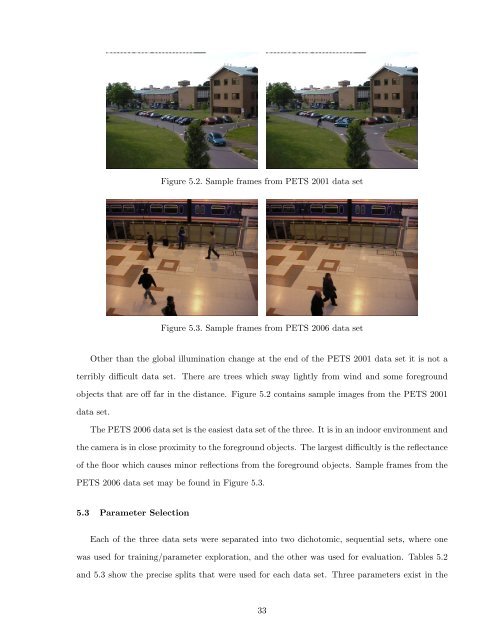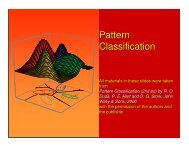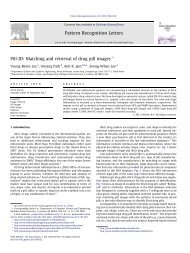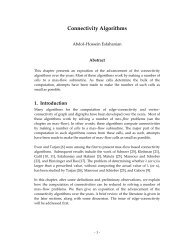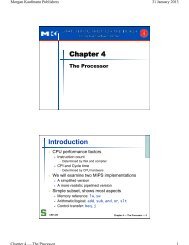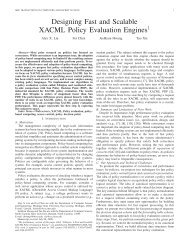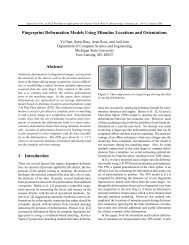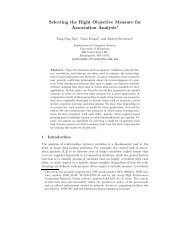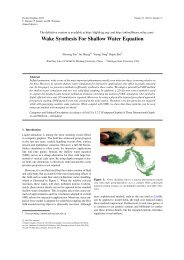Background Subtraction Using Ensembles of Classifiers with an ...
Background Subtraction Using Ensembles of Classifiers with an ...
Background Subtraction Using Ensembles of Classifiers with an ...
Create successful ePaper yourself
Turn your PDF publications into a flip-book with our unique Google optimized e-Paper software.
Figure 5.2. Sample frames from PETS 2001 data setFigure 5.3. Sample frames from PETS 2006 data setOther th<strong>an</strong> the global illumination ch<strong>an</strong>ge at the end <strong>of</strong> the PETS 2001 data set it is not aterribly difficult data set. There are trees which sway lightly from wind <strong>an</strong>d some foregroundobjects that are <strong>of</strong>f far in the dist<strong>an</strong>ce. Figure 5.2 contains sample images from the PETS 2001data set.The PETS 2006 data set is the easiest data set <strong>of</strong> the three. It is in <strong>an</strong> indoor environment <strong>an</strong>dthe camera is in close proximity to the foreground objects. The largest difficultly is the reflect<strong>an</strong>ce<strong>of</strong> the floor which causes minor reflections from the foreground objects. Sample frames from thePETS 2006 data set may be found in Figure 5.3.5.3 Parameter SelectionEach <strong>of</strong> the three data sets were separated into two dichotomic, sequential sets, where onewas used for training/parameter exploration, <strong>an</strong>d the other was used for evaluation. Tables 5.2<strong>an</strong>d 5.3 show the precise splits that were used for each data set. Three parameters exist in the33


